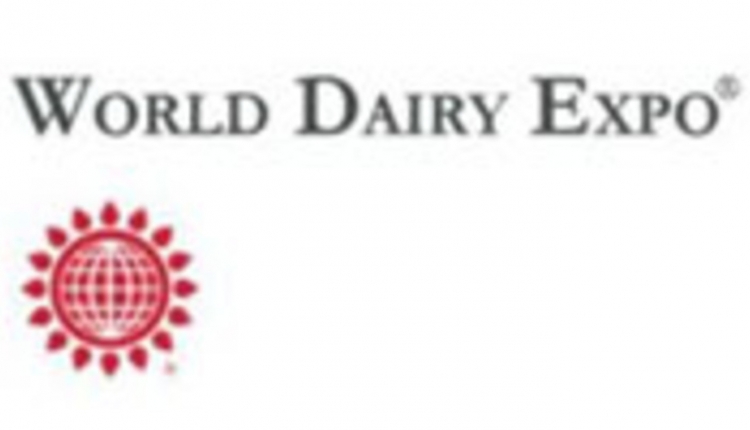The information below has been supplied by dairy marketers and other industry organizations. It has not been edited, verified or endorsed by Hoard's Dairyman.
Mastitis is not a one-treatment-fits-all disease, and it can show up on a dairy in many places.
“Mastitis is an opportunistic disease, with most infections coming from bacteria entering the teat and reaching the mammary gland,” shared Linda Tikofsky, DVM, Boehringer Ingelheim. “So many organisms can cause it, but there are ones that are more common than others that we see repeat themselves, rather than just oddball infections.” Streptococcus (Strep) agalactiae, Staphylococcus (Staph) aureus, Strep dysgalactiae and Escherichia coli are four well-known pathogens that cause mastitis.
Prevention protocols are the best method of keeping mastitis in check. To decide where prevention measures may need to be strengthened, you must know where the pathogens are coming from and how they are infecting your cows. We can break down mastitis pathogens into two categories: contagious and environmental.
“Strep agalactiae and Staph aureus are both contagious pathogens,” explained Dr. Tikofsky. “They primarily live in the cow’s udder and spread from cow to cow at milking time.” Luckily, with the help of strong milking parlor protocols and well-established dry cow therapy programs on our modern dairy farms, the risk of contagious mastitis has been greatly reduced. “Strep dysgalactiae and E. coli are environmental pathogens,” she continued. “They can be found in a variety of places on the dairy, like bedding, manure, water or the milking parlor if proper hygiene isn’t practiced.” Environmental pathogens are more of a concern within our dairy herds today, because they are the most opportunistic pathogens, ready to infect cows at any time.
Dr. Tikofsky reminds us that having strong, hygienic parlor protocols, good bedding and manure management, solid dry cow procedures and well-balanced rations are all great places to start when preventing and managing mastitis. Segregating mastitis-positive cows and healthy cows is another great practice, she added.
Mastitis infections can be generally defined through their microbiological group classifications: Gram-positive, Gram-negative or no-growth. Knowing the classification of a mastitis case can help you choose the best treatment options.
Gram-positive infections are the ones we need to focus our antibiotic treatment on. These mastitis infections are most likely to become chronic if left untreated, and should be treated with a short-duration antibiotic labeled for Gram-positive pathogens.
Gram-negative and no-growth mastitis infections are cases in which an animal will likely not benefit from treatment. A no-growth case lets us know that the cow has cleared the infection on her own and will not need antibiotics. Many mild to moderate Gram-negative mastitis infections will self-cure, and providing an antibiotic treatment will make no difference in the outcome.1 However, it is important to work with your veterinarian to develop protocols that address supportive care for severe Gram-negative cases.
With the help of your herd veterinarian, an on-farm culturing system can help differentiate between these classifications of mastitis infections, providing results within 24 hours. By keeping records of what cases are causing the most trouble, you can pinpoint what protocols need to be strengthened.
Here is a basic outline of how each of the four well-known mastitis pathogens will show up on a culture plate:
- Strep agalactiae and Staph aureus are both contagious pathogens and will show up as Gram-positive. They have characteristic growth patterns that can help identify their presence and provide indication that you should alert your veterinarian.
- Strep dysgalactiae is an environmental pathogen and will also show up as Gram-positive.
- E. coli is an environmental pathogen but will show up as Gram-negative.
- If there is no-growth on your culture plate, there may be little to no bacteria left in the udder, because the cow has already cleared the infection herself.2
“There is not one singular spot on the dairy that we need to look at for mastitis prevention,” concluded Dr. Tikofsky. “It is important to remember that preventing mastitis is multifactorial.” With the help of your veterinarian, implementing an on-site culturing system can help decipher when antibiotic treatments are necessary, and where most cases of mastitis originate on your dairy. By knowing your top pathogen opponents, you can build the best prevention and treatment protocols to keep mastitis under control.
References:
1 Ruegg, PL. Making antibiotic treatment decisions for clinical mastitis. Vet Clin North Amer Food Anim Pract 2018;34(3):413–425.
2 Sterrett A and Bewley J. Using an on-farm culturing system to identify mastitis-causing pathogens. University of Kentucky College of Agriculture, Food and Environment; Cooperative Extension Service. Available at: https://afs.ca.uky.edu/files/using_an_on-farm_culturing_system_to_identify_mastitis_causing_pathogens.pdf. Accessed May 27, 2023.
About Boehringer Ingelheim Animal Health USA
Boehringer Ingelheim Animal Health is working on first-in-class innovation for the prediction, prevention, and treatment of diseases in animals. For veterinarians, pet owners, producers, and governments in more than 150 countries, we offer a large and innovative portfolio of products and services to improve the health and well-being of companion animals and livestock.
As a global leader in the animal health industry and as part of the family-owned Boehringer Ingelheim, we take a long-term perspective. The lives of animals and humans are interconnected in deep and complex ways. We know that when animals are healthy, humans are healthier too. By using the synergies between our Animal Health and Human Pharma businesses and by delivering value through innovation, we enhance the health and well-being of both.
Boehringer Ingelheim Animal Health has deep roots in the U.S. From a start in St. Joseph, Missouri, more than 100 years ago, it has grown to encompass seven sites. Boehringer Ingelheim Animal Health’s portfolio contains widely used and well-respected vaccines, parasite-control products and therapeutics for pets, horses and livestock.
Learn more about Boehringer Ingelheim Animal Health USA at bi-animalhealth.com.



